When we bought Winterlude, there was a 45 lb “fake” CQR on a bit of chain and mostly rode nestled in the bow roller. We did a great deal of research on “the best anchor” and got more and more frustrated, although there did seem to be a consensus that the “fake” CQR’s were not a good choice due to dire warnings of breakage. Despite every cruiser being amazingly opinionated on the subject, there didn’t seem to be a “right” answer for our 1985 Passport 37! So we started reading … Don Casey, Nigel Calder, anyone who has written a book with a chapter on ground tackle, we devoured it. Then we subscribed to Practical Sailor for their independent anchor testing results, as well as a plethora of other independent testing on things that we were planning to add to Winterlude.

As it happened, that year, now 10 years ago, the new Spade anchor was the “flavor of the year”. In the tests they reset well, worked well in a variety of bottom conditions (but not all), and seemed like a good choice for a primary anchor. Keep in mind, Winterlude has an amazingly substantial bow roller, but unfortunately it only has space for one anchor. So our choice for a primary anchor had to be right. But Spade anchors were expensive and extremely difficult to get. We “ordered” ours from our local Indianapolis, Indiana West Marine. As you might expect, the local Indianapolis West Marine staff weren’t exactly knowledgeable about cruising sailboat anchors, being landlocked and all. But they were very helpful, went above and beyond trying to help us procure the anchor we thought we had to have. Sure enough, weeks later, our trusty 45 lb, steel Spade anchor arrived at the Indianapolis location. We had it delivered to the West Marine location to save shipping since it’s a bit heavy and unwieldy. We picked up our new anchor, loaded it in the back of the Chevy Tahoe and made tracks for Annapolis where Winterlude was waiting.
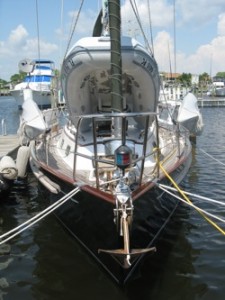
It’s difficult to do that much research on anchors and not be influenced by the choice of rode. Obviously, the existing bit of chain with mostly rode was not going to work for us as cruisers — too much opportunity for the line to chafe on the bottom and set us adrift. Plus we liked the idea of having an all chain rode – we could use less scope if necessary and still sleep well at anchor. I wanted 300 ft of 5/16 high test chain, David didn’t want that much weight in the bow. We compromised at 150 feet on our primary rode attached to another 150 feet of nylon rode. To save shipping costs, we ordered the chain and had it delivered to the local boating store in Annapolis where we picked it up. Since there are no “right” answers, it’s different for every boat and every situation, here are some tips for your ground tackle selection process! But before the tips, one paramount piece of information — the bigger the anchor of any type, the more holding power, so consider the biggest one you can handle aboard your boat. The other factor is setting the anchor – it doesn’t matter how good the anchor is if you don’t take the time and effort, no matter what the frustration level, to bury the anchor and check by diving on it. One of the few times we have dragged anchor was because we both got frustrated and said hell with it (thin sand on hard rock). It was early in the day and we dragged when the wind piped up that afternoon. We should have just looked for another spot that had better bottom conditions, but we were too busy yelling at each other! Oops!!! Don’t do it!!!
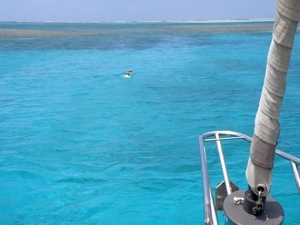
1. Start with the type of boat you have and the options you have available. Do you have a sturdy bow roller with space for 2 anchors, or like us, an amazingly sturdy bow roller but only room for one anchor. Is there a windlass aboard? What size chain or rode does it take? Is it electric or manual? Are you thinking of replacing it? If you decide it’s the right windlass, then your chain/rode choices will be limited by what the windlass can handle. If in later outfitting choices you decide the size of chain the existing windlass can handle is not substantial enough for your boat, check on replacing the gypsy or whatever the mechanism is that governs the size of the chain before you spend the money for a new windlass. Also, how many anchors will you carry? A bare minimum in our estimation is three, ours are: the 45# steel Spade as the primary anchor on the bow on 150′ of 5/16 high test chain spliced to 150′ of 5/8″ 3 strand nylon anchor line, a WAY oversized Fortress as a storm/secondary anchor with 125′ 5/16 high test chain spliced to 175′ 5/8″ 3 strand nylon and a 35 lb real CQR as a “lunch hook” or a temporary backup anchor should we lose our Spade (heavens forbid!).
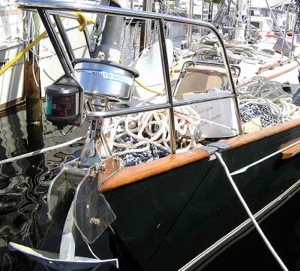
2. Where are you going? The 2nd most important ground tackle decisions should be based on your intended cruising grounds. A thin layer of sand over rock may be a different anchor than thick turtle grass. Unfortunately, there are no uniform cruising grounds that all have perfect sand that will instantly swallow your anchor. It requires a bit more expertise and sometimes a lot more patience to get whatever anchor to set good enough to insure a good night’s sleep. This step is extremely important, evaluating where you may be anchoring and then doing the research on which anchors are good for which bottom conditions is a step that some cruisers seem to skip in the excitement of getting the boat ready to go. We considered the time invested in our selection process as insurance against dragging anchors in exotic harbors. Once you have the parameters, then it’s time to go anchor and anchor rode shopping.

3. Which anchors should you carry, which weights, steel or aluminum and how many? So many variables. The bottom line is that you will encounter anchoring situations in which your selected anchor will not set easily so it’s best to have a small selection. We have a total of three, a lot of cruising boats carry more so that if they encounter a bottom where the XYZ anchor simply will not set to their satisfaction, they can switch to an ABC anchor type that has a better chance. For cruising, you’ll also want at least two anchors that you can deploy for storm anchoring. Our third anchor is a backup “lunch hook” anchor that we’ve never used. If something happens to our primary Spade anchor, we have a temporary backup that will get us through the rest of the season – we can use the backup CQR with the Fortress as a two anchor storm anchor. There are so many anchoring tests out there, we relied primarily on Practical Sailor’s advice and testing, but if you google anchor testing, you can read and read and read to determine what ground tackle combinations you prefer for your boat.
4. Consider the benefits of oversizing, but don’t get crazy. As a general rule everything we used to outfit Winterlude is oversized. Thus, most of our ground tackle is larger than what was recommended by the manufacturers for our size boat. Be sure to check the manufacturing sizing recommendations and holding power before deciding what size anchors, chain and rode to buy. And don’t forget to consider your boat in the determination of anchor and chain/rode — if your boat has more windage than an average cruising boat — i.e. higher topsides or is heavier than average for your size, you should take the differences into consideration when upsizing.
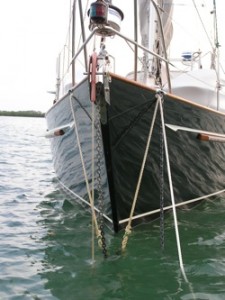
5. Before your final selection, make sure whatever you get, especially backup anchors, will fit on your boat! Nothing worse than getting a spare or storm anchor back to the boat and discovering that no matter which way you wiggle it, it’s not going in that lazerette or hatch! We don’t have room to carry spare anchors below, so the primary bow roller has the Spade, the FX-37 Fortress is on a special bracket on the stern rail and the backup CQR is in a PVC tube attached to the lower section of the arch.
6. Spend considerable time devoted to any “weak links” in your ground tackle system. The old adage “only as good as it’s weakest link” applies doubly to ground tackle. When we left to go cruising, we had a really spiffy, cool looking swivel connection on our Spade on the bow. When we got to Isla Mujeres, MX, our first stop, a more experienced cruiser stopped by and said “don’t take my word for it, but you may want to re-evaluate that connection, and we’ve known several boats that have had that connection fail” — WHAT??? Yikes! Sure enough after doing more research, we determined it could only allow the chain to swivel through about 40 degrees each way before putting pressure on the anchor. We replaced it with plain old shackles (2 of them) that allow our anchor to swivel 90 degrees in each direction before putting pressure on the anchor. In order to get the maximum strength, we had to drill out the attachment hole in the anchor just slightly to allow it to accomodate a larger shackle, otherwise we would have given up all the holding strength we had so carefully placed together with just the shackle link.
7. USA vs China Steel. I don’t know if this is true or not, do your own research, but we were told by a trusted source to choose steel manufactured in the USA over steel manufactured in China every time. The claim is the Chinese steel for the same designations can be inferior quality. As I said, I haven’t substantiated the claim, but we did make sure that all the critical steel in our system is made in the USA.
8. Consider how you’re going to deploy your storm anchor. Typically when we set the storm anchor, we want one anchor buried in the direction that wind is coming from now and the other set to hold in the direction the wind is forecast to come from for the storm. In the real world, it never seems to work out perfectly, but we usually try to have at least a 45 degree angle between the two anchors. We chose the Fortress as our storm anchor because it’s light weight doesn’t seem to affect it’s holding power – since we have a single bow roller, we have to set the Fortress by dinghy. The light weight is a major advantage, BUT our inflatable dinghy is allergic to the sharp tips on the Fortress – so we have to be especially careful when deploying and retrieving it.
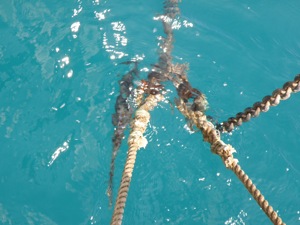
9. If you choose all chain rode, be SURE to add an anchor snubber. Chain does not stretch. Wave and chop action on your hull will cause the chain to bounce, risking pulling out your anchor. Adding a nylon snubber adds the best of both chain or rode by allowing flex in your ground tackle. The nylon will stretch and minimize the stress on both your boat and the anchor below. 10. No matter what anchor and rode you choose, the most imperative step in staying put at night is to set your anchor securely and then dive the anchor to make sure it’s buried – or at least dug in securely enough to hold the boat. If not, you need to reanchor, as frustrating as it might be. It will be more frustrating in the middle of the darkest night with the wind whipping the rain sideways to realize you’re dragging! A friend taught us how to not only dive to check on the anchor, but also to hand set it if necessary to be secure. This is THE most important step no matter what ground tackle you have aboard. Do NOT skip it! If the water is too deep or too murky to allow actually seeing the anchor, backing down hard to insure it’s set is even more important. BUT, be sure your nylon snubber is in place to mitigate the load and protect your windlass!
Do you have anchor selection tips? Leave a comment and let us know! THX! Jan
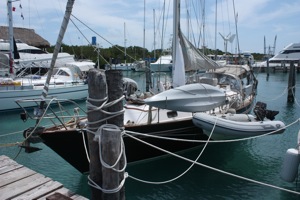

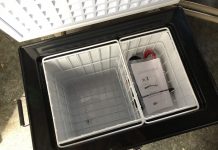
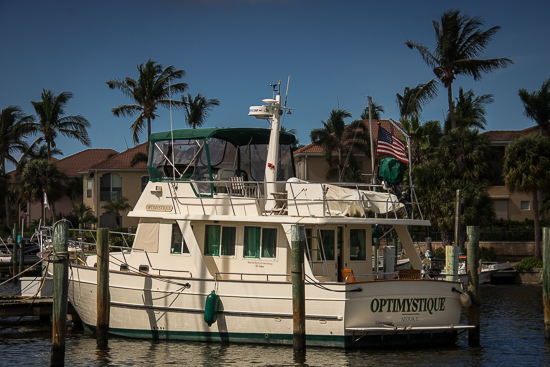







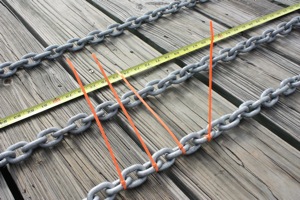
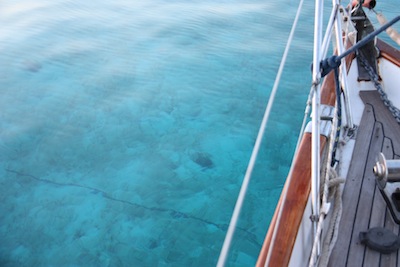
Everyone has an “opinion” on anchors 🙂 We have been using a 44lb Bruce on our Island Packet 380 for 10yrs and find it superb. Last winter in Bahamas we traveled with two other boats, one with 45lb CQR and the other with a Spade. Both of them had trouble getting their CQR and Spade to set in hard, rocky bottoms while we set the Bruce first time, every time in the same conditions (perhaps we were lucky?) My friend even bragged about his Spade until he experienced difficulty setting it while we were snugly anchored. I believe the CQRs are overrated. I talked to many cruisers in Bahamas with CQRs who have dragged. Our friends who use one always worry about dragging. We have never dragged in Bahamas with the Bruce. Perhaps there will be a first time. We’ll see next winter. 🙂
Yes, ask any group of cruisers what ground tackle they use and everyone has the “right” anchor! 🙂 I keep hearing the Bruce get a bad rap, but our buddy boat for years had a Bruce, hand set it if necessary and literally never dragged from Belize to Cartagena and back. Our Spade had a similar record, although we did drag a couple of times when we weren’t careful enough with our anchoring. We didn’t have any trouble in the Exumas last winter. As long as you have adequate sized gear (and I’m amazed how many cruising boats we see with TINY anchors, nowhere near sized for their boat size), it’s all in the anchoring, backing down and checking to make sure the anchor is well set. Set your Bruce well and sleep tight! 🙂 THANKS for your comments!
Thanks for your comments Mark! I replied, but I inadvertantly put it on commutercruiser.com instead of here.
Thanks Debra for pointing out the problem! I reposted and this one works . . . well, it does for me!
Currently weekend cruises on the muddy Mississippi…. good luck finding an anchor in the murk to see if it is well set. We back down on our 35 lb Danforth, which sticks well in the muddy bottom. When we cruise to locations with weedy or rocky bottoms (coming soon) we have a 45 lb Bruce for our primary.
What I always thought was an important part of anchoring, is knowing what a self resetting anchor is, and also picking the right anchor for the bottom. The old fashioned admiralty anchors, the bruce, and the delta, are the only ones that will reset themselves. I’ve seen several CQRs and plows drag because they ended up lying on their side. With that said, I would use only a danforth type anchor in mud or sand. A bruce, sqr, plow, and most of them will only, wait for it, plow an underwater farm. But not the danforth. Now, if its hard bottom, or any other combination other than sand or mud, I use the bruce. And I agree with everything you’ve said. I recently found a swivel that looks like it might be too big, but I’ll have a 44lb bruce on one end, a 33lb on the other end, with either two 50ft pieces of chain or 4 equaling two pieces at 100ft long, connected to this swivel, then another piece of 50ft chain up to the boat with snubbers. That would be my choice for storms, substituting the Danforth where necessary. The one thing I haven’t incorporated that you guys have included in a post, is a kettle. I look forward to putting that into play too. I have also heard of folks dropping a mushroom type anchor off the back to slow down the swinging, but that was St.Pete with nothing but sand. I don’t think it would be good in a rock bottom area. But, self resetting, so when the swings ya, you’re ready. If you have to use the Danforth, there’s no self resetting, so know if you will have current, know what time the tide changes, and be ready if the wind blows. And your advice on finding a place to store it is really great advice, I gave up a really nice admiralty anchor mounted on the deck, and after some toe jamming, I gave it to my friend as a yard decoration. He is enjoying it alot. Thanks again, Kb